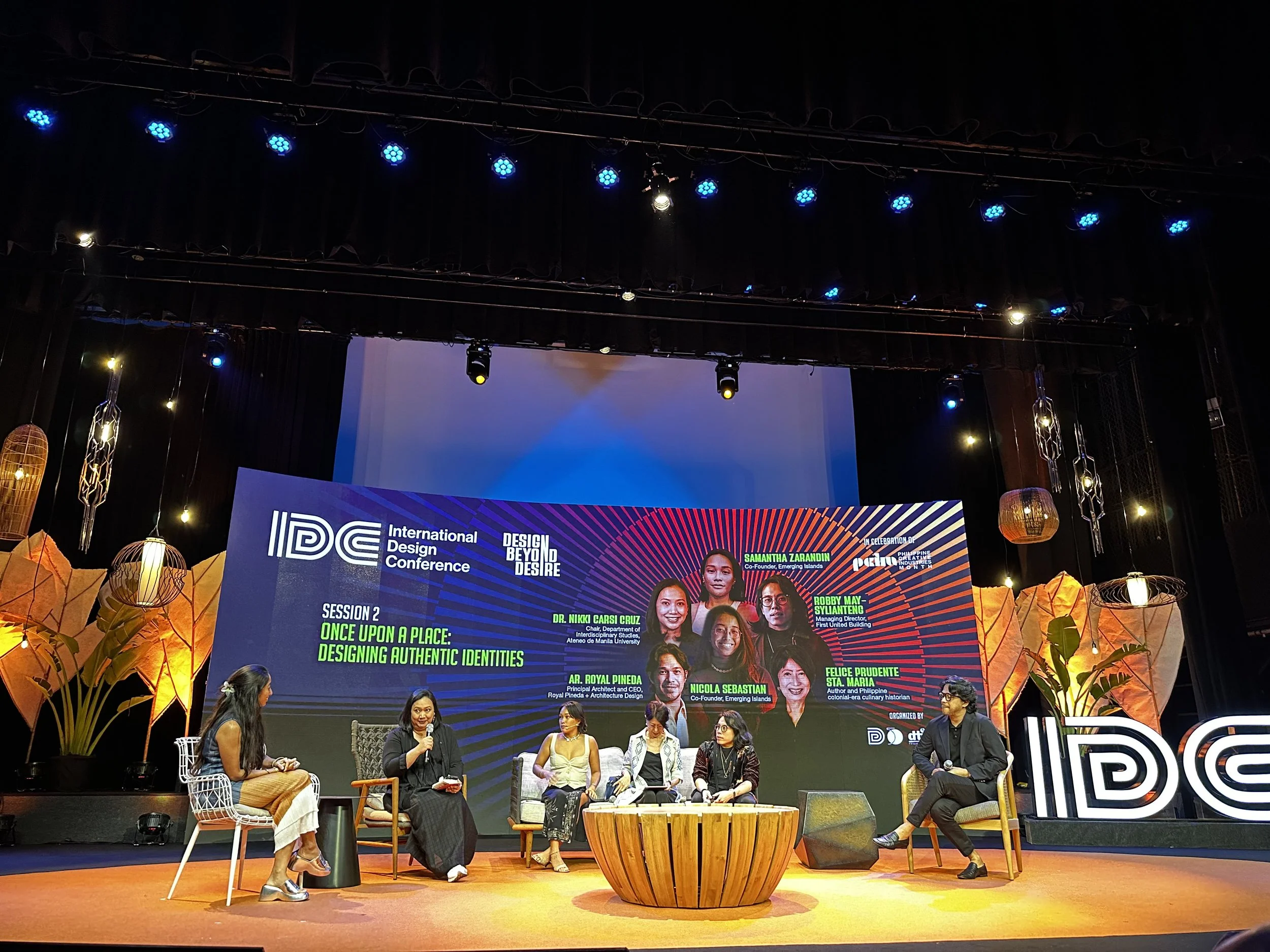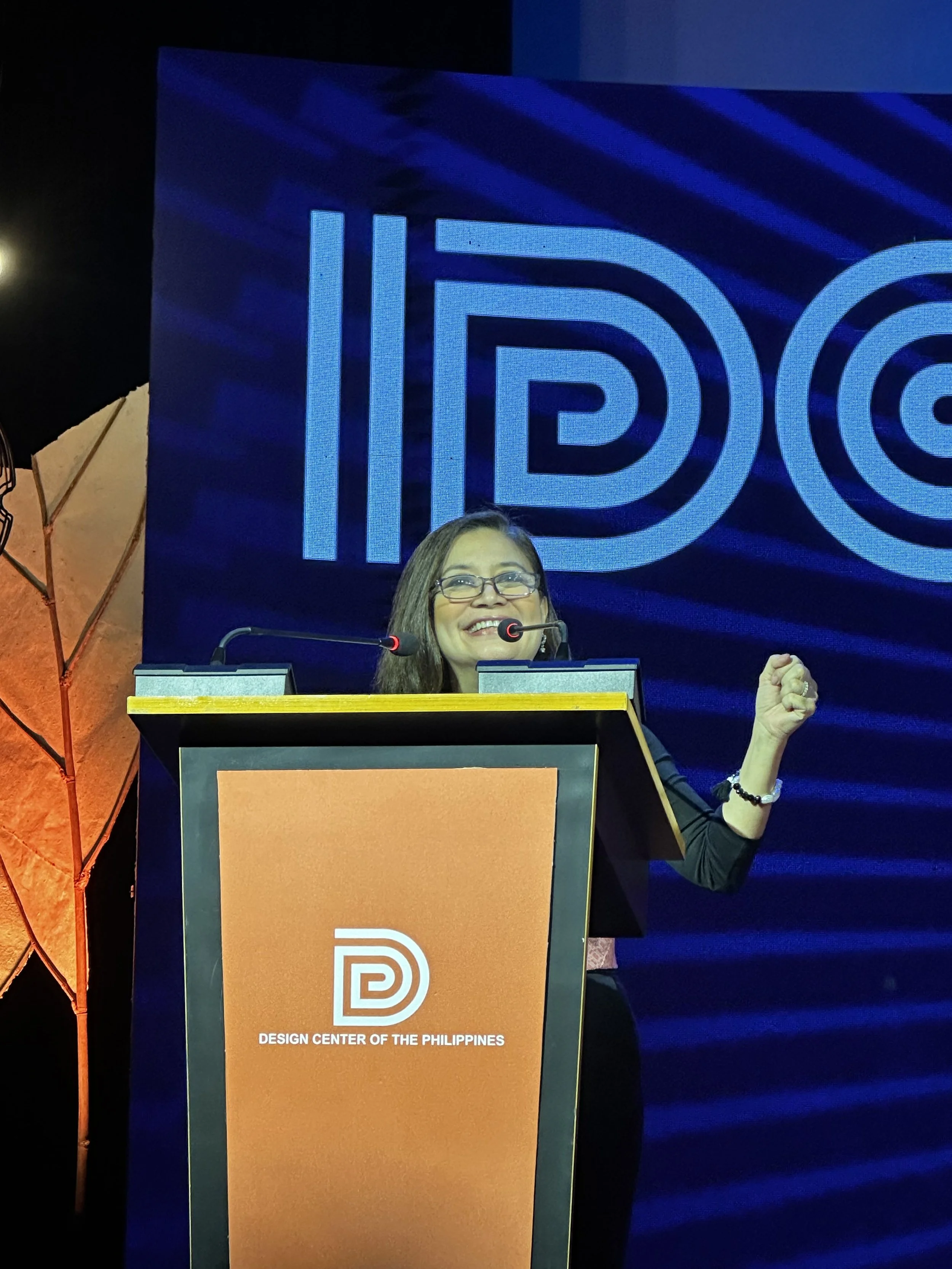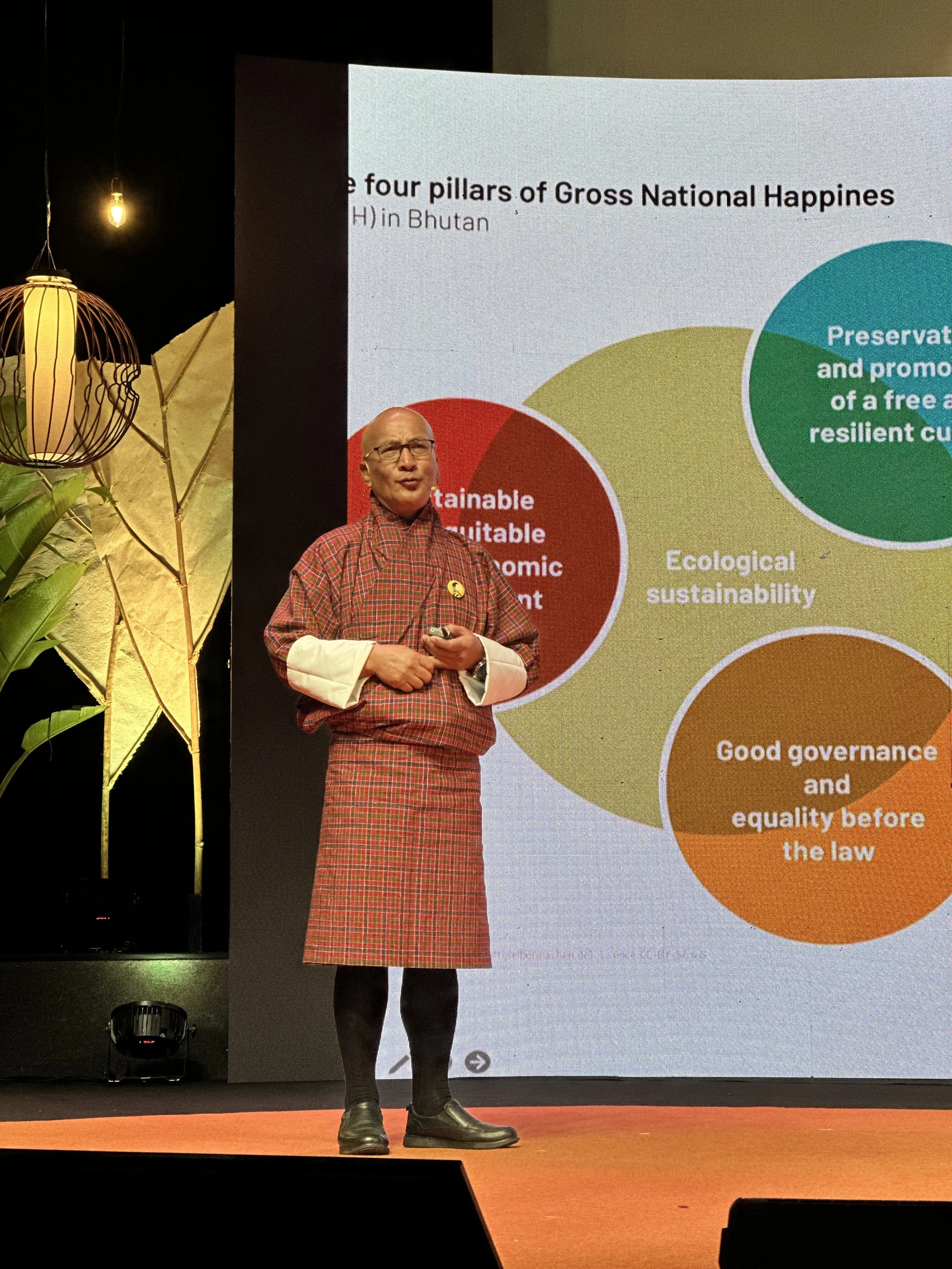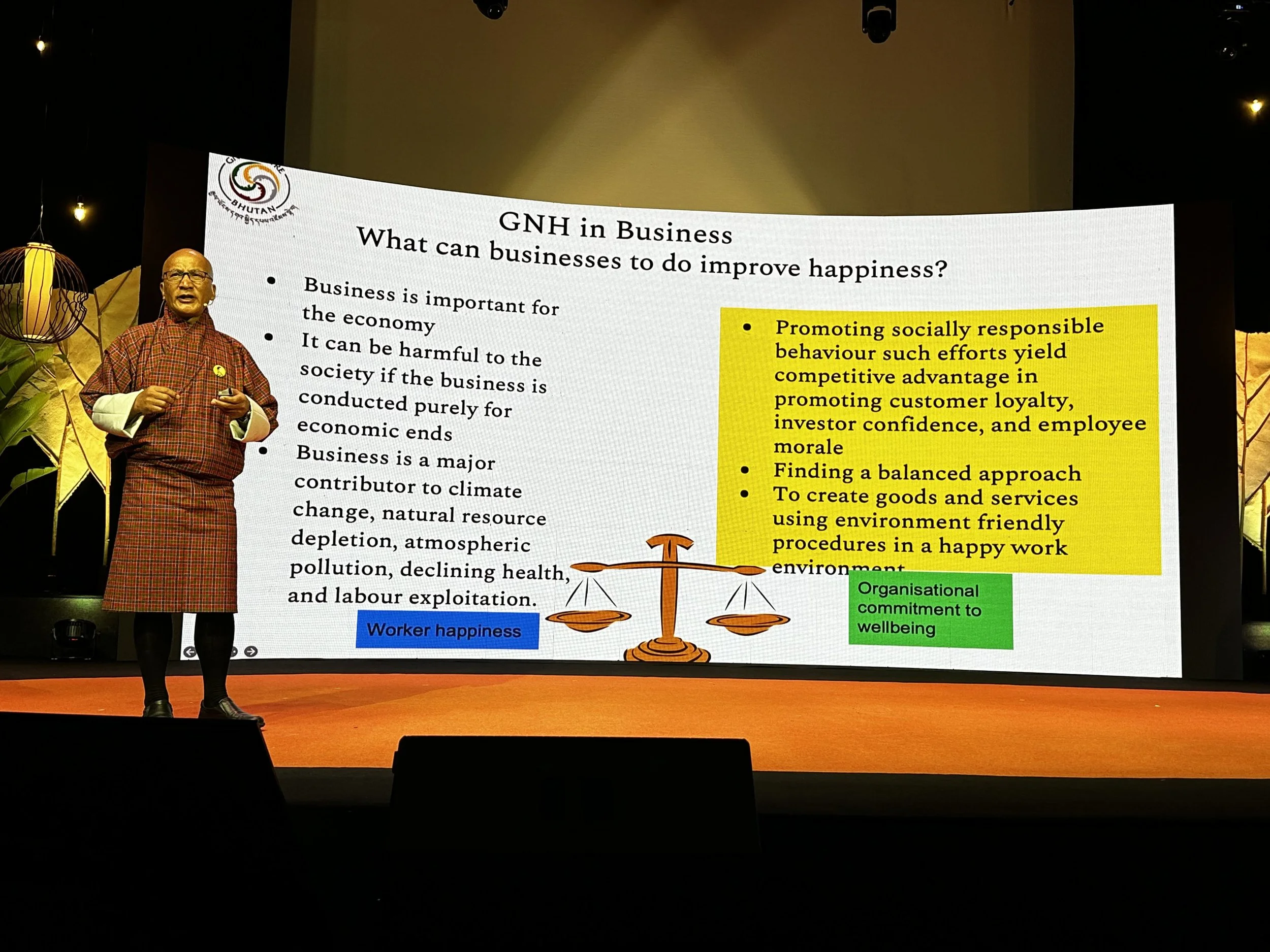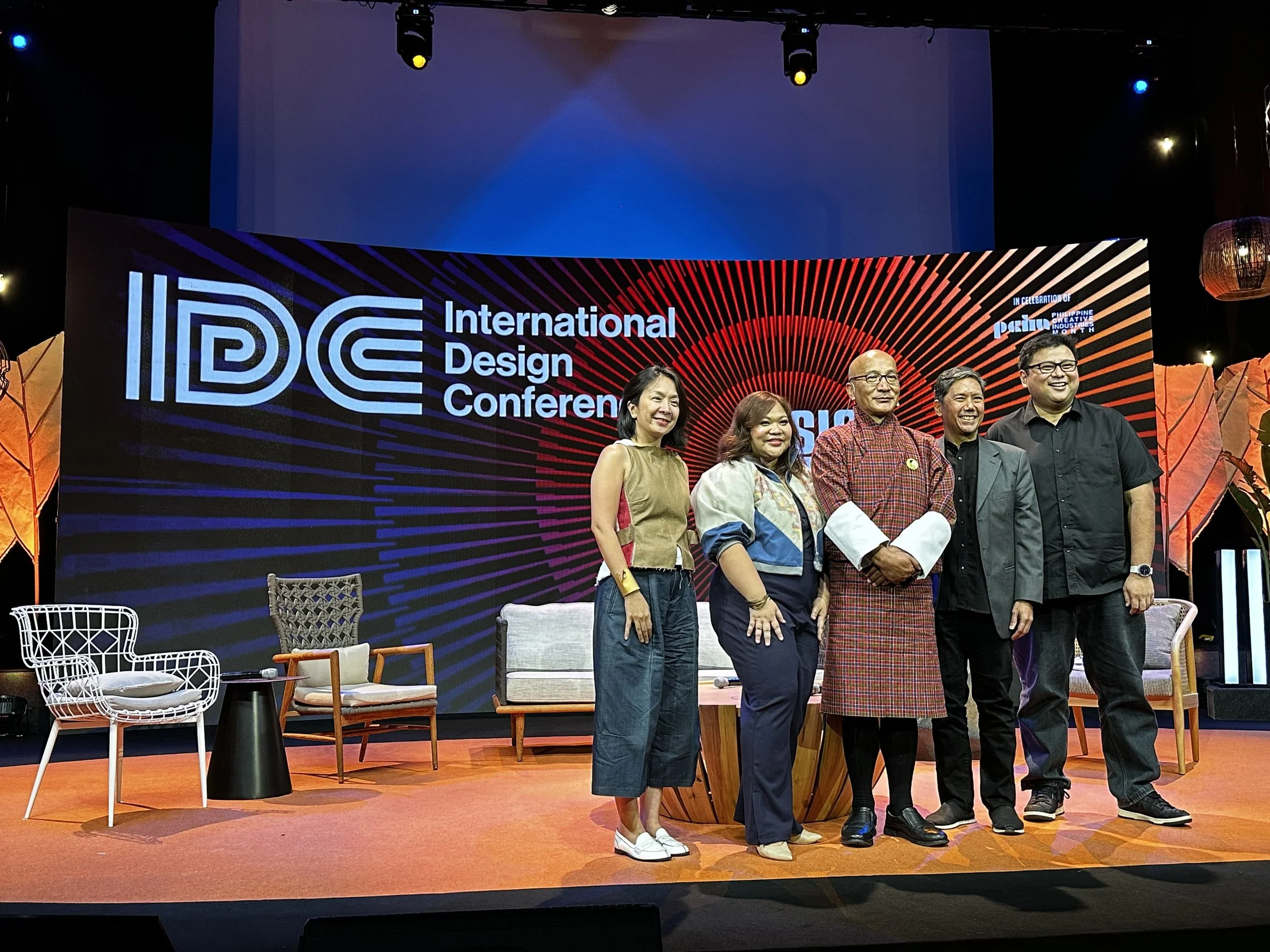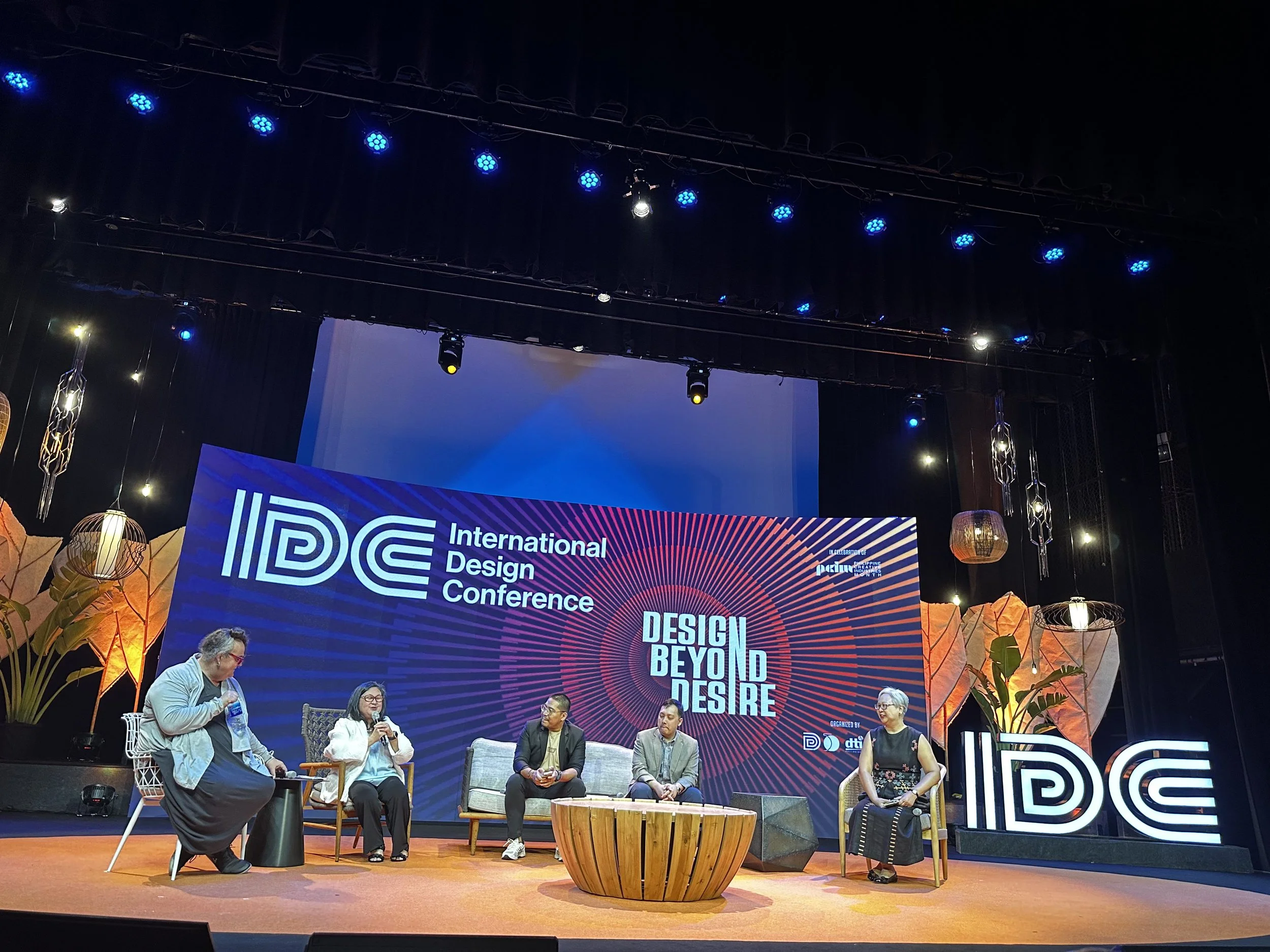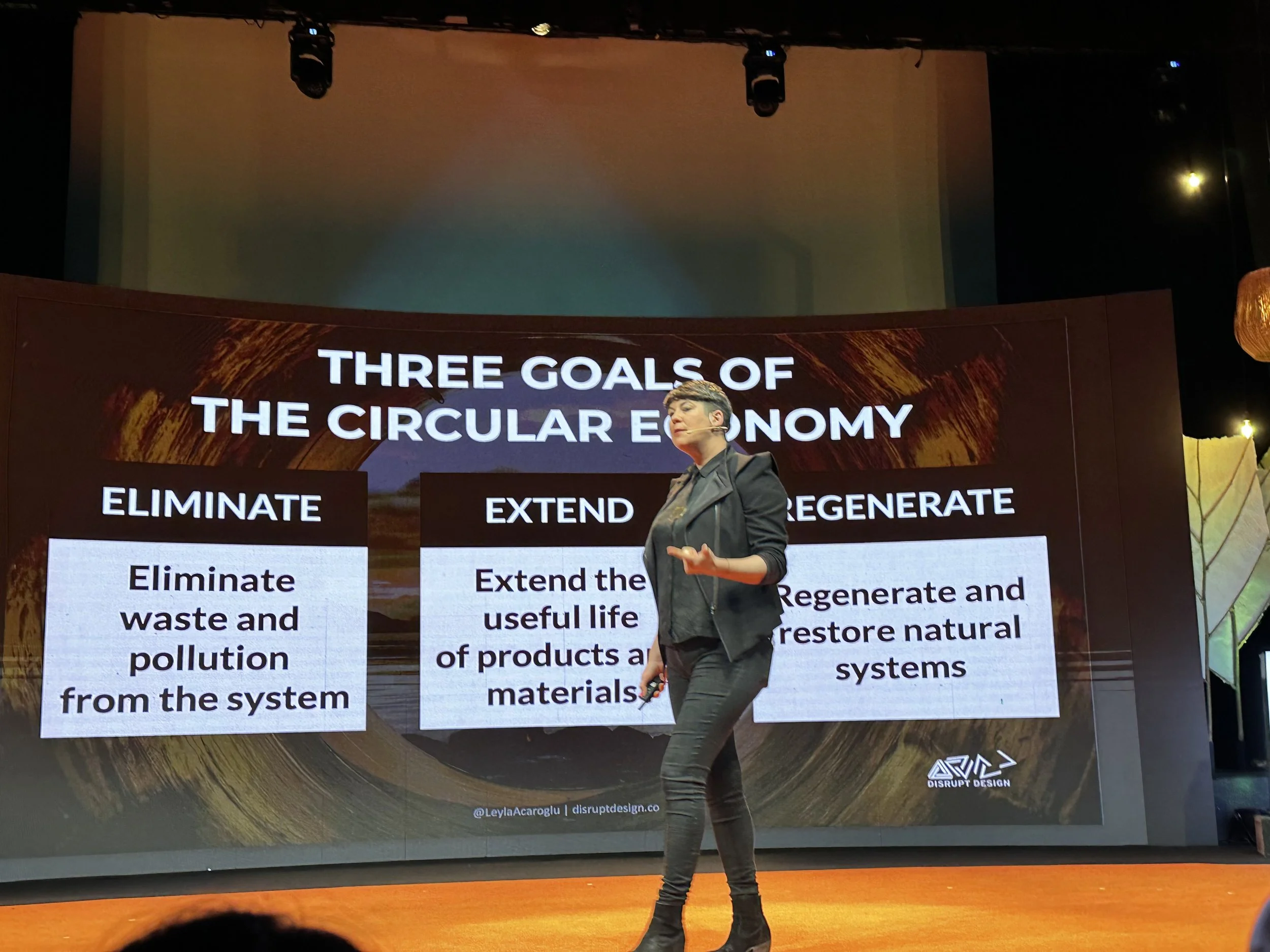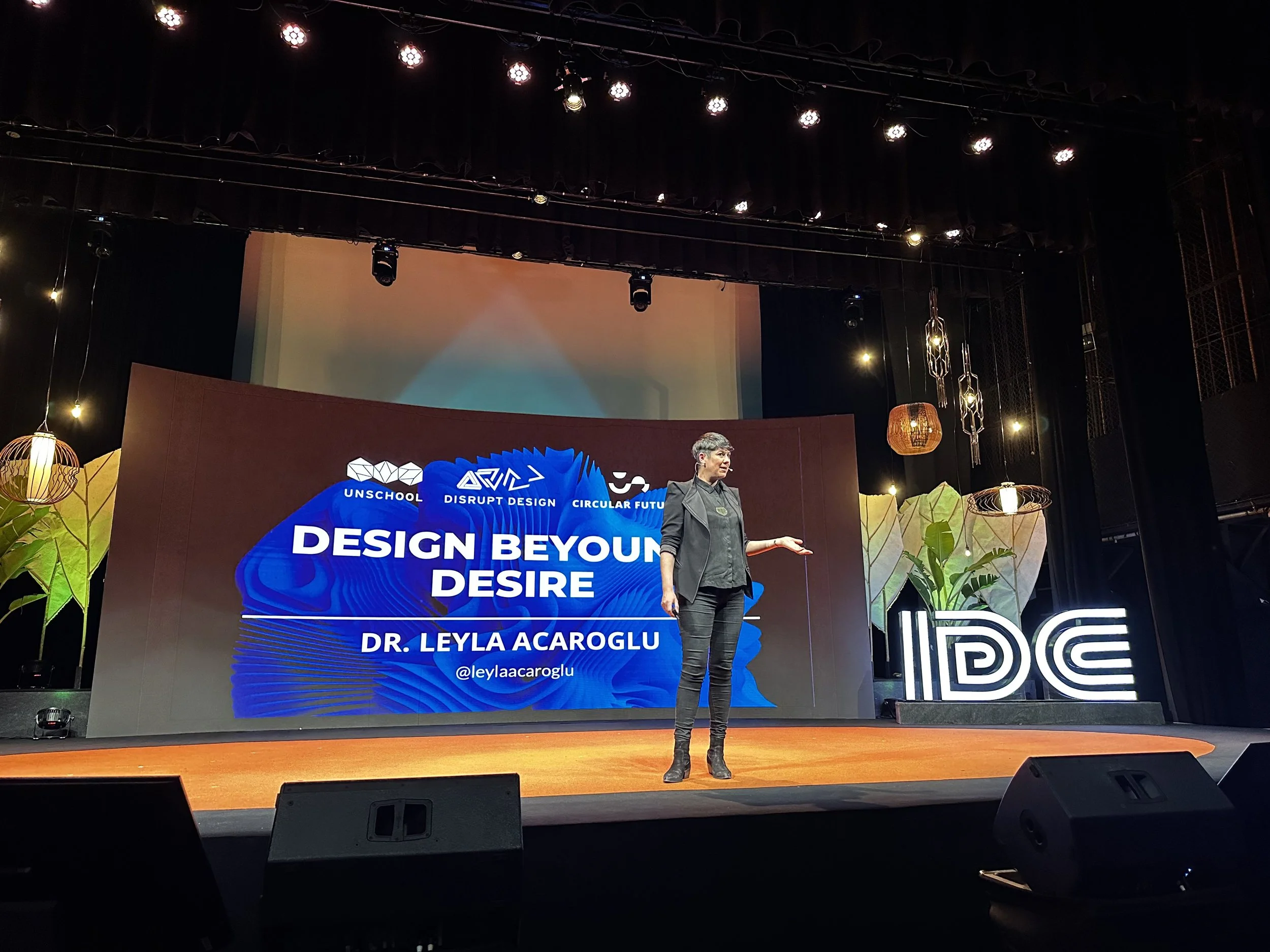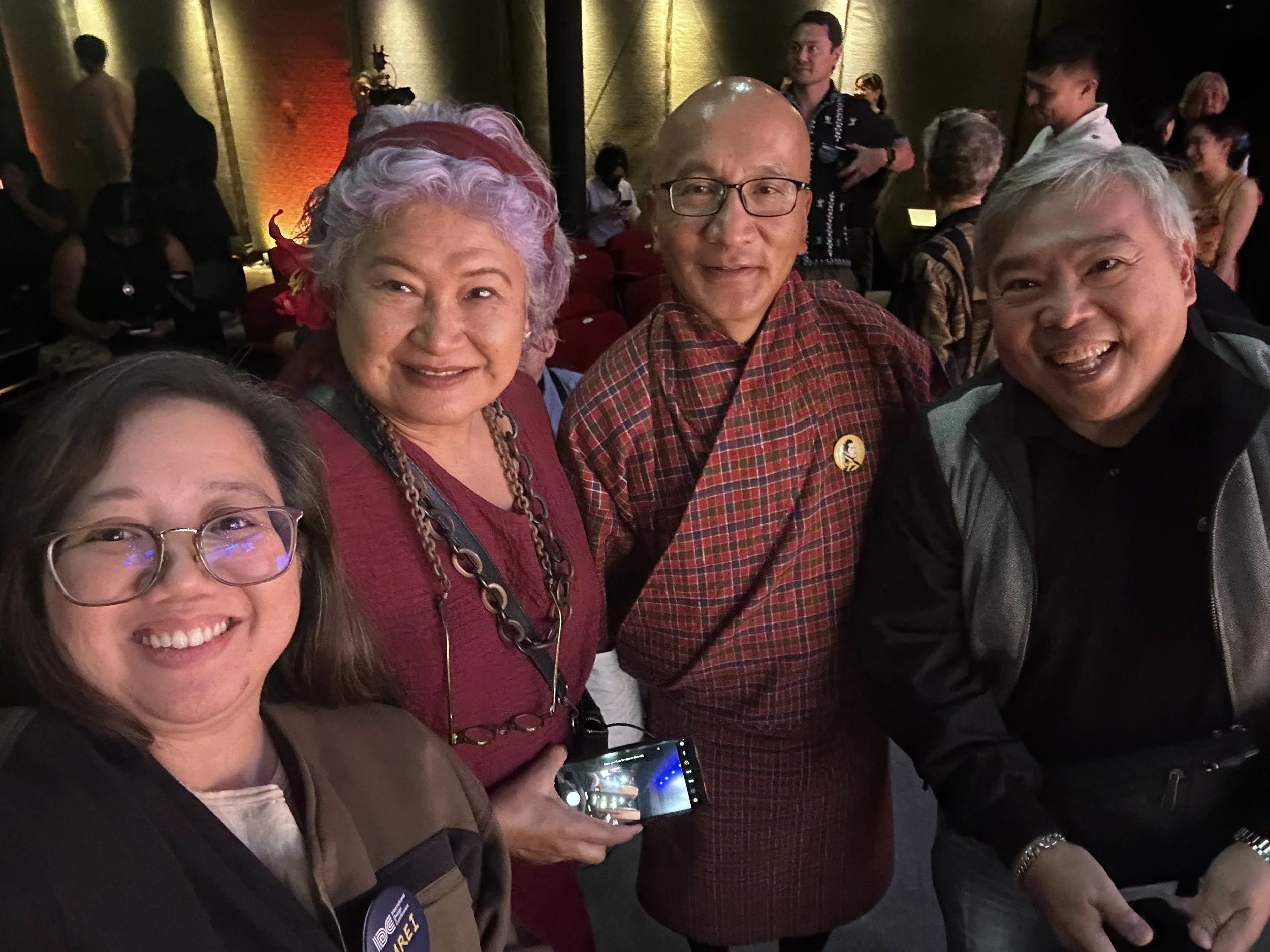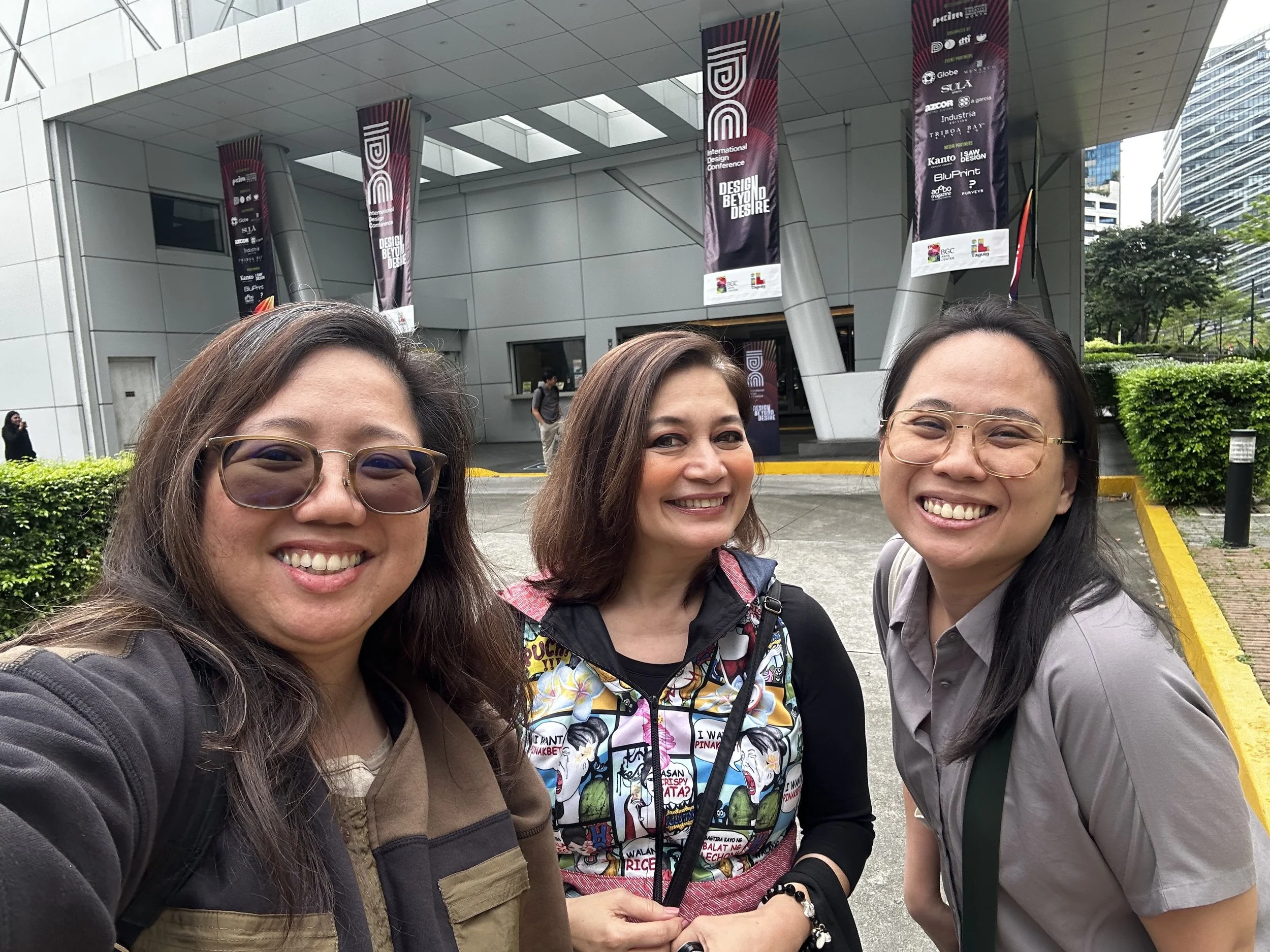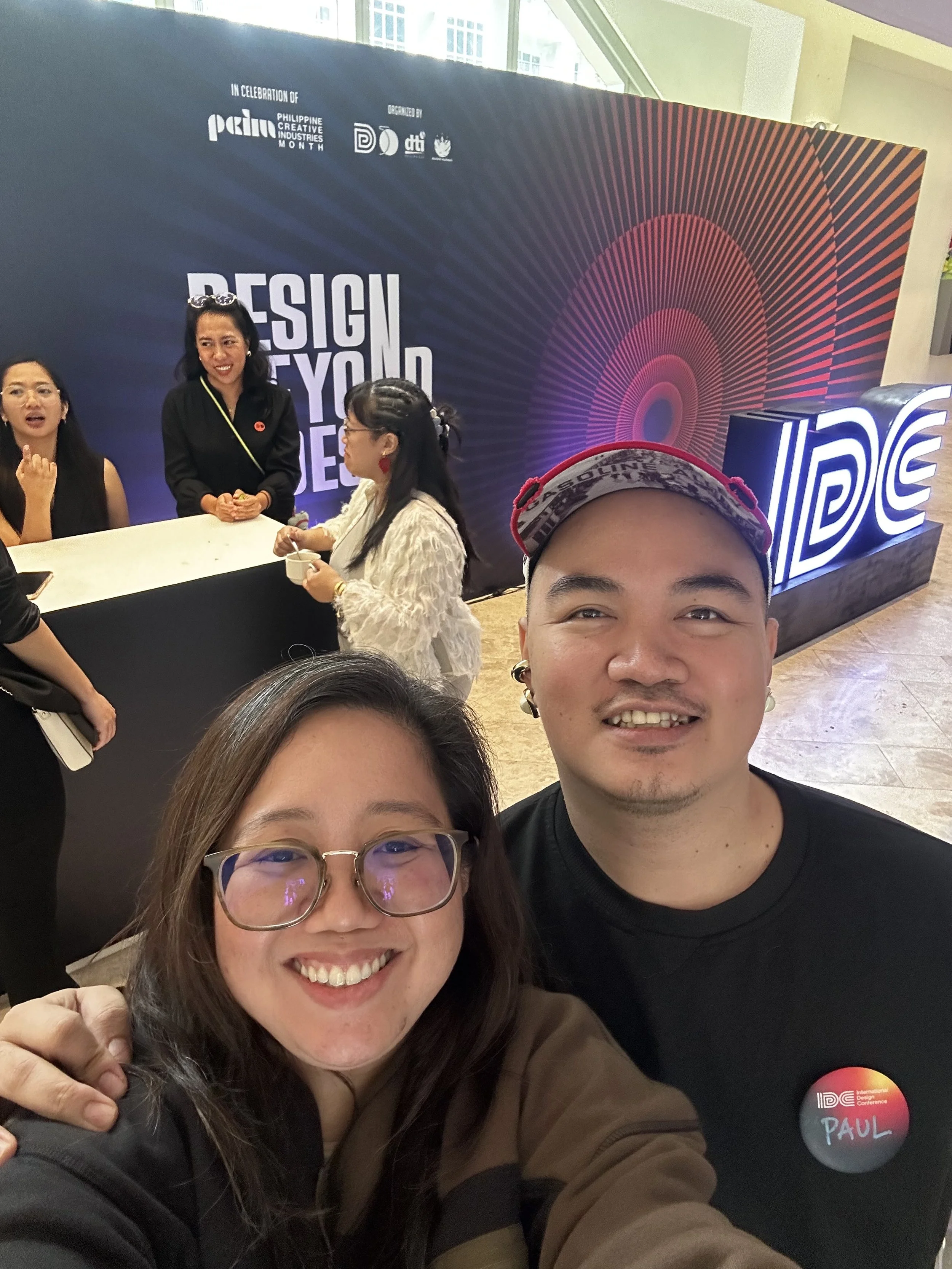[ Design Beyond Desire ] How Filipino Creatives Can Lead the Future of Inclusive and Sustainable Storytelling
Amrei Dizon, CPM, ME[ Design Beyond Products ] Thinking About People, Purpose, and Well-being
At the International Design Conference 2024 (IDC), the theme “Design Beyond Desire” led creatives, entrepreneurs, and thought leaders to a deeper reflection on design's role in addressing societal challenges, beyond aesthetics and functionality. This year's conference highlighted the need for design to contribute to a life-centered and inclusive future. Mylene Abiva, CEO of FELTA Multimedia and Co-Chair of the Design Council of the Philippines, set the stage with a compelling question: “How do we ensure that Filipino creativity transcends borders and becomes a global phenomenon?”
This question resonated with me, especially as I work closely with MSMEs through the Go Negosyo Kapatid Mentor Me Program and interact with entrepreneurs from across the Philippines, from Region 1 to Region 13. I’ve often wondered why, despite the richness of our culture, some regional stories and products remain untold. My experience with local entrepreneurs reveals just how much heritage and craftsmanship exists in our islands, yet digitalization and storytelling are still nascent. These entrepreneurs are eager to tell their stories but lack the tools and platforms to do so effectively.
Bles Lantanoya, the Undersecretary of the Department of Trade and Industry (DTI), emphasized the potential of the creative industry to drive economic growth while preserving cultural heritage. As she noted, "Our focus is not just economic output but also empowering Filipino entrepreneurs to tell their stories globally while keeping their heritage intact." This is a sentiment I share, especially as we navigate the future of Filipino creativity on the world stage.
[ Gross National Happiness ] Moving Beyond Economic Growth
One of the most thought-provoking segments of IDC 2024 was the discussion on Bhutan’s Gross National Happiness (GNH) philosophy, introduced by Mr. Latu of the GNH Center Bhutan. GNH reimagines success beyond Gross Domestic Product (GDP), focusing on holistic well-being. Bhutan's model is built on nine domains: psychological well-being, health, education, time use, cultural diversity and resilience, good governance, community vitality, ecological diversity and resilience, and living standards.
Mr. Latu shared Bhutan's journey in prioritizing happiness as a key metric of success. He explained how Bhutan's government asks a central question for every project: "Will this bring happiness and well-being to the people?" His reflections on how GNH is measured helped us consider the broader implications of well-being, not just in policy but in design and creativity. He reminded us that “happiness is not just an emotion but an indicator of societal health” and emphasized how Bhutan's commitment to environmental conservation is a manifestation of this philosophy. Bhutan's 70% forest cover is an outcome of this approach, where environmental sustainability is embedded in national policy.
The emphasis on well-being and inclusivity in the workplace immediately resonated with me. In my own work, I’ve seen how creating environments where people can be their authentic selves leads to more creativity and productivity. Whether it's fostering inclusivity for LGBT+, PWDs, neurodivergents, or other communities that need support, this focus on well-being translates into innovation.
Shaping Filipino Identity Through Design
One of the most powerful discussions at IDC 2024 was the panel on “Emerging Islands,” which emphasized the importance of re-centering Filipino identity in our design practices. The panel delved into how islands, both literal and metaphorical, represent untapped narratives in the Philippine creative landscape. These islands are filled with stories waiting to be told, whether they come from indigenous traditions, local communities, or the vast biodiversity of the Philippines itself.
Listening to the voices of these “islands,” including the local communities that inhabit them, was a recurring message from the panelists. "The Philippines is an archipelago not just of land but of stories," one speaker shared, highlighting the importance of preserving cultural knowledge, whether it comes from the Ivatans of Batanes or the Talaandig Manobo tribe in Bukidnon.
The panel also discussed the connection between language and biodiversity, emphasizing how indigenous languages often contain deep knowledge about sustainable living. "A single word is like a handful of ocean," said one participant, pointing out the significance of preserving these linguistic and cultural nuances
As someone who works with entrepreneurs across various Philippine regions, I see firsthand the richness of local culture—from the craftsmanship in Mindanao to the untold stories of entrepreneurs in various parts of the country. Yet, much of this remains hidden from the mainstream narrative, overshadowed by global design influences. This is an ongoing challenge that our creators must face. Filipino identity is not monolithic; it’s diverse and layered, and our designers should be at the forefront of telling these stories.
What stood out for me was the realization that the lack of representation in our design outputs is more than a missed opportunity—it’s a loss of identity. Filipino creators have the power to tell our stories, but the challenge is in doing so on a global scale without losing the essence of who we are.
AI and the Inclusive Vision for the Future
Ana Arriola Kanada’s talk on AI emphasized the opportunities and challenges of designing technology for inclusivity. She introduced the concept of digital twins, explaining it as “a digital clone of our current reality, which can help model and predict outcomes for everything from cities to individual systems”.
While I’ve seen how AI tools like content creation platforms can excite and empower Filipino entrepreneurs, the digital divide remains a significant barrier. Entrepreneurs are hopeful that AI will make storytelling and marketing more accessible, yet the challenge is ensuring that AI does not deepen inequality.
Ana echoed this sentiment, warning that without intentional inclusivity, AI could widen existing social divides. Her talk was a reminder that while AI holds immense potential, we must design these systems to include, not exclude.
[ Rethinking Waste ] Designing for Sustainability
Dr. Leyla Acaroglu’s session on the circular economy challenged us to rethink the way we view waste, opening with the bold statement, “Waste isn’t a byproduct; it’s a design flaw.” This perspective called for a fundamental shift in how products are created and disposed of, urging designers to focus on the full lifecycle of their work.
Acaroglu explained the flaws in the current “take, make, dispose” model of production and advocated for a circular approach, where waste is minimized by designing products that can be reused or repurposed. She shared real-world examples, like a Scottish brewery using leftover bread to brew beer and how heat from data servers can be repurposed to warm swimming pools. These examples of industrial symbiosis demonstrate how byproducts can be turned into valuable resources.
The talk also introduced the importance of “systems thinking”—an approach that looks beyond individual products to consider how everything within a system is connected.
Acaroglu encouraged designers to think strategically, noting that focusing on isolated issues often leads to solving the wrong problem. For her, true sustainable design requires understanding the entire system and its potential impact.
Her insights resonated with my experience working with entrepreneurs across the Philippines. Many local businesses are eager to embrace sustainable practices, but the challenge often lies in the lack of resources and awareness about circular design. At Vitalstrats and Introspeck, we’ve started seeing a shift—more creators are interested in sustainability, but they need the tools and knowledge to make it happen. I believe there’s a massive opportunity here, not just for product design, but for embedding circular thinking into every aspect of our businesses and communities.
Acaroglu also pointed out the limitations of traditional recycling, arguing that the real solution lies in designing products that don’t need to be thrown away at all. Recycling alone, she emphasized, is not enough to address the scale of the waste problem.
In conclusion, Acaroglu called for a broader view of design, one where sustainability and circularity are at the core of all processes. Designers, she argued, must take responsibility for their role in shaping systems that work harmoniously with the environment rather than depleting it.
Elevating the Philippine Creative Industry [ A Call to Action ]
Congressman Toff De Venecia closed the conference with an inspiring message about the potential of the Philippine creative industry. “The creative sector is not just an economic driver; it’s a cultural force,” he said. De Venecia shared that the creative economy contributed 7.1% to the country’s GDP in 2023, translating to over 1.72 trillion pesos.
He underscored the need for policies that support creatives, particularly in rural areas, and highlighted legislative initiatives such as the National Museum of Design Bill and the Philippine Creative Industries Development Act. “We must aim to position the Philippines as a creative powerhouse in the ASEAN region,” De Venecia urged.
For me, De Venecia’s remarks were a reminder that the creative industry holds immense potential—not just economically but also as a cultural force that can drive societal change. As we move forward, it’s essential that the policies and initiatives we create reflect this potential.
A Future Shaped by Design
As I look back on IDC 2024, the conversations around inclusivity, sustainability, and identity have ignited a deeper sense of responsibility. Design, at its core, is not merely about creating products—it’s about people, their narratives, and how we ensure their well-being. Whether we’re exploring AI, embracing circular design, or preserving cultural heritage, we hold the potential to shape a world that is both creatively vibrant and socially inclusive.
But as creatives, entrepreneurs, and thought leaders, we must ask ourselves: Are we doing enough to address the underlying needs of our society through design? How can we use our platforms to elevate marginalized voices and foster a more sustainable future? These discussions at IDC 2024 have shown that while we are on this path, the journey ahead demands more dedication, collaboration, and introspection.
What stories are we telling?
Whose stories are we leaving untold?
And how do we ensure that design, in all its forms, serves as a force for positive change?
By harnessing our collective creativity and resources, we can create a future where Filipino stories are not only told but embraced and celebrated on the world stage. What we create today will shape the future we live in tomorrow. The real challenge is not just to design, but to ask ourselves: What are we designing now? Are we creating with intention, with the needs of people and the planet in mind? Every decision we make as designers and innovators has the potential to shape a more inclusive, sustainable world. So, as we move forward, let’s remember that the future is built in the choices we make today. What will you design next?

